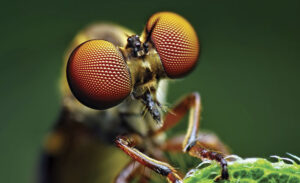The photographic technique of focus stacking it is an effective way to obtain sharp and detailed images, especially in nature and macro photography. Instead of taking a single image in focus, several photos taken in focus at different focal planes are used and then combined in post-production.
Il focus stacking it is useful when taking photos of subjects that have limited depth of field, such as a flower with part of the foreground and the rest out of focus. Instead of choosing between the foreground or background, you can combine photos so that everything is in focus.
To take a series of shots for focus stacking, you need to use a tripod to keep the camera stable and unchanged. It is also recommended to use a remote shutter or timer on your camera to avoid shaking your camera while shooting.
Initially, you take several photos of the same subject, using different focus settings. You can use autofocus or manual focus to change the focus of the camera. You start by shooting an image that focuses on the front of your subject and then continue shooting, gradually shifting the focus to the rear.
The number of images captured depends on the depth of the subject and the interval in focus between individual photos. Typically, you’ll take at least five or six images, but in some cases you need many more.
Once you’re satisfied with the series of shots, it’s time to stitch them together in post-production. There are several software tools that allow you to do focus stacking, including Adobe Photoshop, Helicon Focus and Zerene Stacker.
The stitching process involves overlaying images taken in focus at different focal planes and using the sharp parts of each image to create a single sharp image. The software automatically calculates which parts of the image to use from each individual photo to achieve uniform focus.
Once the merging process is complete, you can make further edits to the photo, such as adding contrast, color correction, and retouching.
Focus stacking takes some practice and patience, but the end result is definitely worth the effort. Overall, it’s a technique that can be used successfully in a variety of photographic situations, especially when taking pictures of subjects with limited depth of field such as nature or macro.
In conclusion, focus stacking is a photographic technique that allows you to obtain sharp and detailed images by combining several photos taken in focus on different focal planes in post-production. While it takes some time and effort, the end results are noteworthy and can greatly improve the quality of your images.
- Choose the subject: focus stacking is particularly useful when taking photos of subjects with limited depth of field such as flowers, insects, miniature objects and more. It is important to choose a subject that offers interesting depth and requires greater attention to detail.
- Setting up the camera: Once you’ve chosen your subject, it’s important to set up your camera appropriately. You need to use a tripod to keep the camera steady and steady, and a remote shutter or camera timer to keep the camera from moving while shooting. Also, it is recommended to use a medium or small aperture to get a greater depth of field.
- Taking photos: to achieve focus stacking, it is necessary to take several photos of the same subject, using different focus settings. You start by shooting an image that focuses on the front of your subject, and then continue shooting, gradually shifting the focus to the rear. The number of images captured depends on the depth of the subject and the interval in focus between individual photos. Typically, you’ll take at least five or six images, but in some cases you need many more.
- Image Processing: once the photos are taken, it’s time to stitch them together in post-production. There are several software tools that allow you to do focus stacking, including Adobe Photoshop, Helicon Focus and Zerene Stacker. The stitching process involves overlaying images taken in focus at different focal planes and using the sharp parts of each image to create a single sharp image. The software automatically calculates which parts of the image to use from each individual photo to achieve uniform focus.
- Additional Changes: Once the stitching process is complete, you can make further edits to the photo, such as adding contrast, color correction, and retouching.
- Saving and Sharing: finally, you can save the processed image and share it on social media or use it to print a physical copy.
In conclusion, focus stacking is a photographic technique that requires some attention and patience, but can lead to surprising results. By following these steps, you can create sharp, detailed images that capture every detail of your subject.
We are waiting for you on our page FACEBOOK !!!
